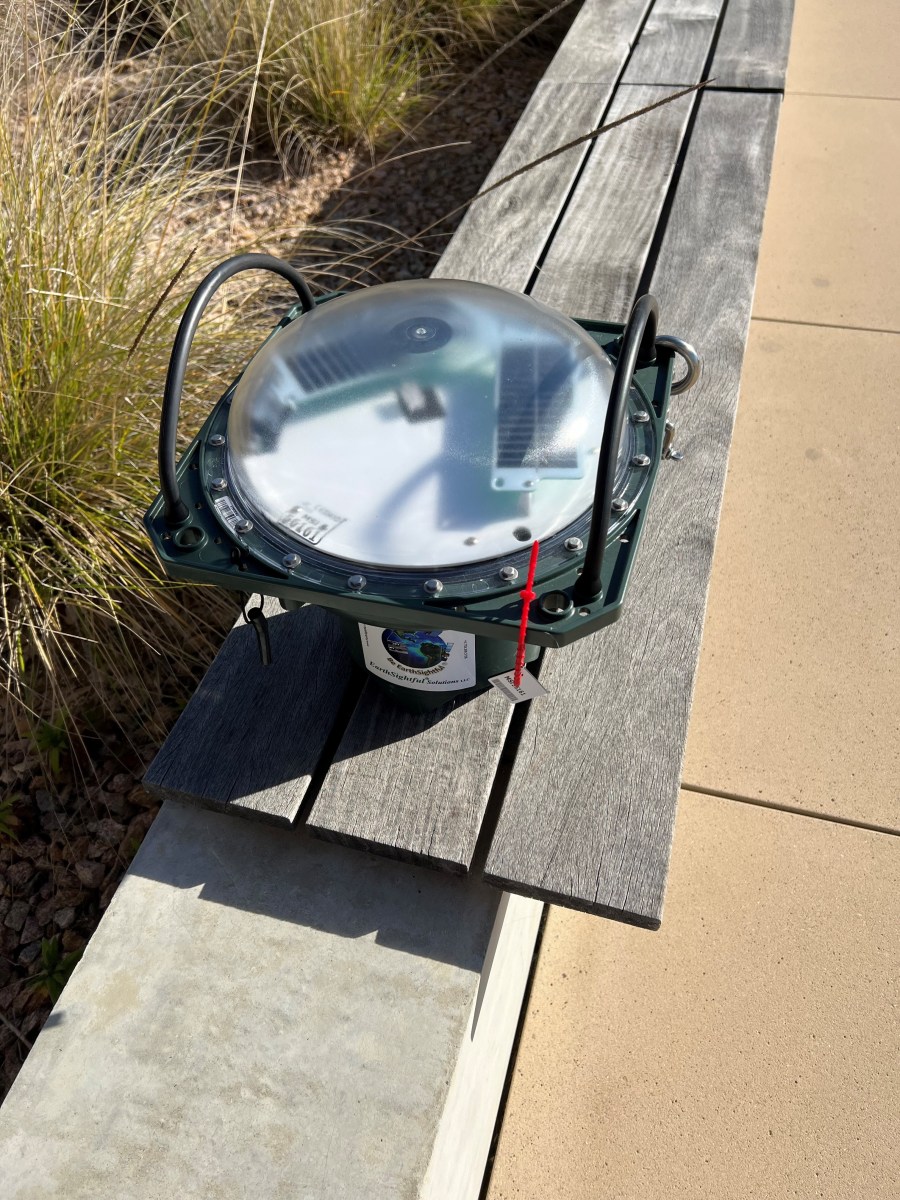A female fin whale that washed up on Pacific Beach in December is likely still floating off the coast of Southern California, according to NOAA researchers who attached a satellite buoy tracker to the carcass in order to study her movements.
The telemetry buoy was attached to the juvenile female's pectoral fin before the mammal was shipped out to sea for the 2nd time on Dec. 14, and sends a location every three hours, researchers with NOAA's stranding team said. It's the first time the team has used this technology to track a dead animal, and its data is giving researchers new insight into what is a relatively unknown movement pattern.
"I think the idea came from just knowing that we sort of tow these animals and then hope that they don't show up again and we don't really have a whole lot of evidence that we're taking them far enough offshore or that they're not coming near shore, other than just getting anecdotal reports from the public or folks out on the water," said Justin Greenman, assistant stranding coordinator for NOAA Fisheries.
The data, at first, wasn't too shocking. The whale drifted toward Mexico, as expected. But Greenman's team was surprised to see the whale spin back around and move toward the Channel Islands. It changed direction again and is now heading south.
Get top local stories in Southern California delivered to you every morning. Sign up for NBC LA's News Headlines newsletter.
Fin Whale carcass's path at sea
Source: NOAA's Southwest Fisheries Science Center
Tracking the mammal's movements serves a number of purposes. It for the first time allows stranding researchers in near-real time to be able to warn authorities if the whale moves too close to shore or to boats and shipping lanes. The data also secondarily provides insight into what happens to whale carcasses at sea.
NOAA oceanographer Amy MacFadyen, who studies how we can protect coastlines from oil and chemical spills, has found the data collected from the fin whale can be used in her own research to study ocean currents.
California
News from across California
"In order to take any action to try to mitigate impacts to the environment from a spill that's occurred, you first need to know where the oil is located and be able to say where it's going, what other areas might be impacted so that you can take those response answers, MacFadyen said. "So that's the question that we're essentially trying to answer with our modeling."
NOAA researchers last had eyes on the whale on Dec. 23. At that time, her body was disintegrating but had a long way to go. After all, the fin whale is the second-largest mammal on earth. But on top of lending herself to research, she's also feeding a new generation of life.
"On December 23, it was definitely still there. Not as distinguishable as a whale, a giant pile of sun-bleached blubber. But the telemetry buoy was there, and there were a bunch of blue sharks and other scavengers that were feeding on," Greenman said. "That's exactly what we want to see. And actually, some of our southern California shark researchers have been taking advantage of knowing where these carcasses are so that they can do shark research."

There is a chance the buoy has since been detached from the fin whale's body but they won't know that until they can get to her again.
"It is possible that given the decay and the scavenging done by sharks and others, that the buoy could become separated from the whale, Greenman said. "And it could be that this is just the buoy that is sending us messages right now. If it did become detached from the whale at the surface, but without any observations of it, we won't know."
"Otherwise, we're just kind of waiting for [the whale] to sink."
When that happens, NOAA's data collection research may be over but a whole new source of life will begin. The so-called whale fall will provide a source of food for dozens of organisms in the deep sea. And even the fin whale's bones will become a haven for sea life once all the flesh is gone.
The whale carcass washed ashore on Dec. 10, 2023, and lifeguards spent the day working to tow the mammal out to sea. The body returned at least once before it was shipped out (hopefully) for good on Dec. 14.
The fin whale is the second-largest whale species on earth, behind only the blue whale. They are also considered endangered and are, “fairly rare,” according to NOAA spokesperson Michael Milstein said. This whale could weigh up to 100,000 pounds.



